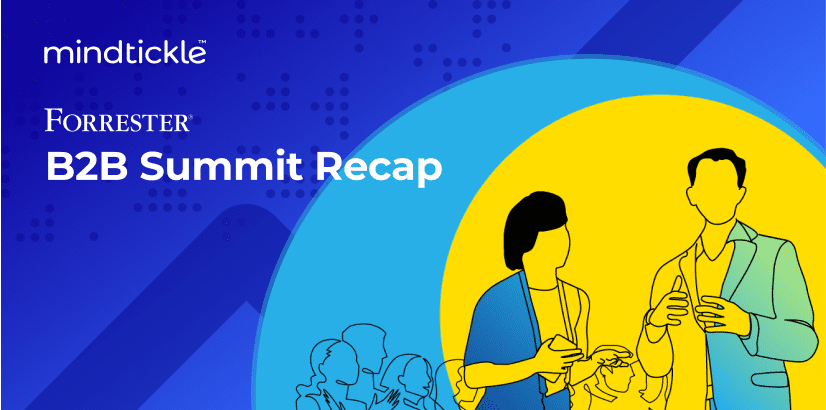Last week’s Forrester B2B Summit in Austin, Texas brought together revenue leaders, Forrester analysts, and rev-tech vendors to share their insights and strategies for revenue excellence. From discussions on sales competencies to aligning sales and marketing, the sessions offered valuable takeaways for businesses looking to thrive in the dynamic B2B landscape.
In this blog post, we’ll share key highlights and actionable tips from the sessions we attended and led as well as conversations we had throughout the event. You can also check out a mini photo gallery of some of our team at the event.
This post is for anyone who didn’t attend the Summit and wants to know our biggest learnings or for those who joined us in Austin and need a recap to reference as you start thinking about how to bring these learnings to your own revenue organization.
The booth troop!
Packed house
80s theme night
Another great session
One of the essential ingredients for sales success is having a clear understanding of your sales competencies. Before seeking a vendor or investing in tools, it’s crucial to evaluate and define your sales capabilities. By identifying your strengths, weaknesses, and areas for improvement, you can make informed decisions that align with your specific needs.
Measuring the success of your revenue enablement programs can be challenging, especially as they evolve over time. While initial indicators like adoption or consumption can be helpful, it’s essential to go beyond surface-level metrics. Gathering feedback on program quality and data on actual impact can provide valuable insights for continuous improvement. Measure how your programs are impacting field behaviors and how those behaviors are contributing to core revenue outcomes.
Revenue leaders and managers recognize the value of training coaches to be effective mentors. However, finding the time for sales coaching is often a challenge. To maximize impact, it’s crucial to prioritize coaching and invest in the development of your sales coaches. By equipping them with the necessary skills and tools, you empower them to guide and support your revenue generators effectively.
Forrester’s Phyllis Davidson and Peter Ostrow taught us how to avoid “sales content purgatory,” where reps have access to tons of content but can’t find what they need or figure out how to use it. This aligns with what we found in our 2023 State of Sales Productivity Report. The vast majority of content engagement comes from a small percentage of the content to which reps have access. To stay out of “purgatory” focus on quality over quantity. Prioritize high-value content and make derivatives of that content that apply to specific audiences, personas, and selling scenarios.
Continuing the motif of “quality over quantity,” Forrester’s Amy Bills and Jennifer Bullock applied this to the creation of customer case studies. Instead of producing a case study with every available customer, focus on creating a few high-quality stories that address common customer questions and concerns. Furthermore, involving the sales organization in the creation process ensures that case studies align with their specific sales motions. Remember, having case studies alone isn’t the solution; enabling sellers to effectively utilize them is key.
In a standing-room-only session, Kathleen Pierce proposed a shift toward mapping content to buyer questions as an effective structure for sales content. By aligning content with specific buyer questions, it becomes easier for reps to search for and find relevant content for the selling situations they encounter. It also maximizes content’s impact on buyer decisions. Work with your field teams to understand key questions and friction points, and implement a question-answer framework within your sales content management system.
Pierce and Anne Slough explored the challenges and potential of Digital Sales Rooms. While DSRs have promising benefits, widespread adoption struggles remain. Mutual action plans, real-time insights, and buyer collaboration are key value drivers for DSRs. Sales leaders should assign DSRs to solve problems such as substandard buying experiences, inefficient sales processes, and longer buying cycles. Communication of GDPR compliance and mapping DSRs to selling and buying processes are crucial for success.
Making these learnings a reality at your selling org
The Forrester B2B Summit delivered valuable insights and actionable strategies for businesses aiming to enhance their sales performance. Keep these takeaways in mind as you’re building out your revenue productivity strategy for the rest of the year.
Want to see how Mindtickle can help make these learnings a reality at your selling organization?P



 By Poornima Mohandas
By Poornima Mohandas


